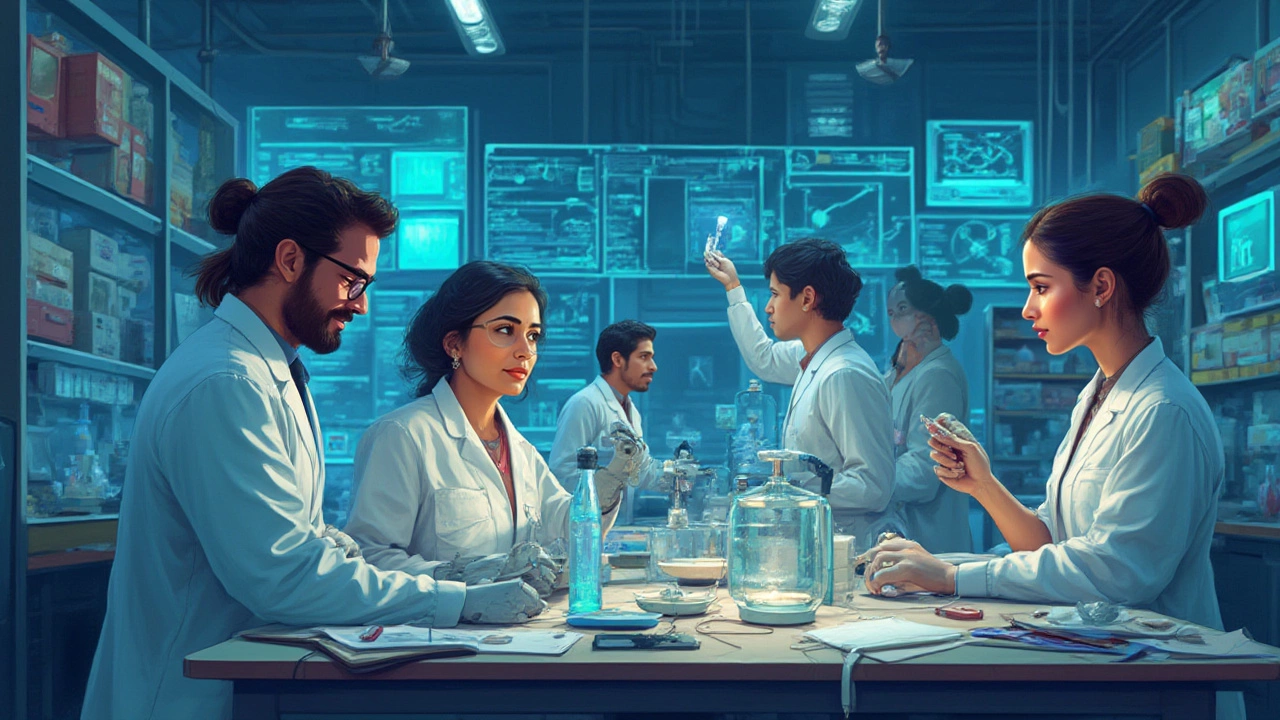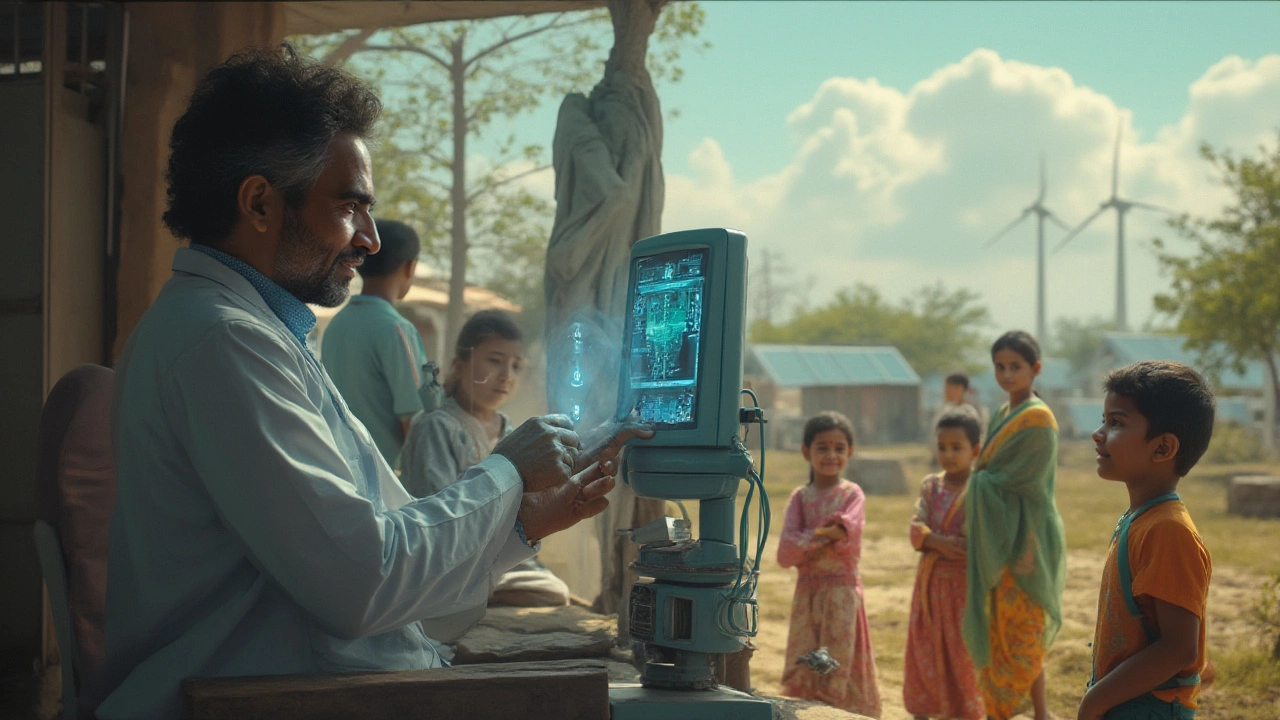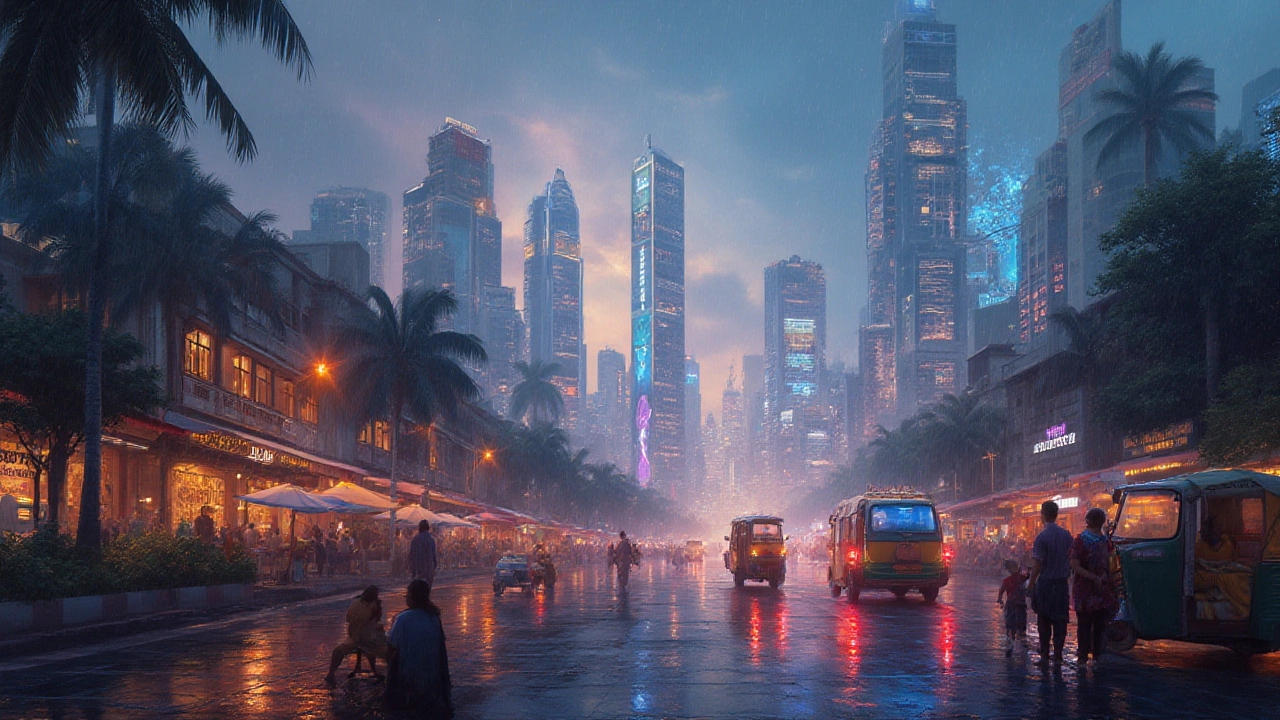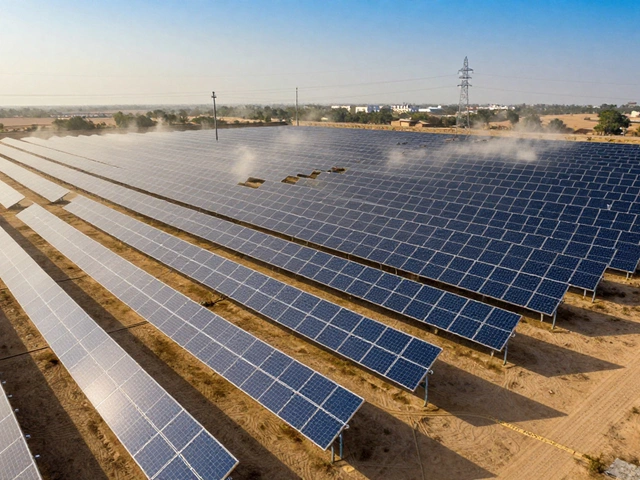Self-driving cars, robot assistants, cures for old diseases—back in school, this sounded like a far-off future. Now, it’s basically 2025, and we’re living through a burst of new technology that’s changing day-to-day life for real. But what’s actually coming out in these next twelve months, and how much of it is hype? This year isn’t just about phone upgrades or new apps. We’re talking about tech with real muscle: stuff that can change the way we work, heal, travel, and even eat.
AI Breakthroughs: From Work to Home and Everything In Between
You see the term “AI” everywhere. But in 2025, artificial intelligence is no longer just chatbots or clever image filters. Companies are rolling out AI-powered devices for everyday tasks. Picture your phone scheduling meetings or sorting your kids’ schoolwork from your own. Big players like Google and Apple are betting heavily on more intuitive AI assistants that can process voice, facial expressions, and context from surroundings. I’ve read that incoming phones will understand not only what you say, but how you say it—detecting stress, urgency, or even sarcasm.
The world of work is flipping upside down too. Imagine an accountant who never touches a calculator, because AI does the math and checks the regulations behind the scenes. Healthcare is another huge field benefiting from smarter and safer AI—hospitals are already trialing AI radiologists, who analyze X-rays or MRIs for signs of disease faster than most trained humans. In Cambridge, a recent study compared AI detection rates for breast cancer to doctors, and found AI flagged slightly more early cases.
Public safety? Smart cities in Korea and Finland are already piloting traffic and crowd management with AI, identifying problems before they happen. Companies like Nvidia are showing off AI video systems that can spot suspicious behavior quickly to help prevent theft or violence. Expect this tech to show up in airports, shopping malls, and stadiums soon.
The home front has a few surprises. Personal AI chefs are coming: smart ovens that scan ingredients and whip up recipes on their own. I just saw a prototype fridge that senses what’s running out, re-orders it, and suggests how to use the leftovers. Sports and fitness? AI-powered wearables monitor blood sugar, hydration, and muscle fatigue. My cousin’s sleep tracker even suggested bedtime changes based on stress levels picked up by subtle skin sensors.
Still, people worry—understandably—about job security and data privacy. If an AI system is wrong, who’s responsible? Countries like Germany and Singapore are launching new rules in 2025 to force companies to explain AI decisions to users, so tech doesn’t feel mysterious or intrusive.
Green Tech Is Getting Real: Solar, Batteries, and Beyond
Climate change isn’t waiting, and neither are the companies racing to invent energy solutions in 2025. One of the hottest trends is flexible solar panels, thin enough to roll onto rooftops or shade structures at schools or bus stops. Tesla and Chinese startup LONGi are in a tight race to build commercial panels that set up in half the usual time and last more than 25 years—the first big installs are already on schools in California and New Delhi.
Batteries are another giant leap this year. Solid-state batteries—basically, safer, longer-lasting versions of what’s in your phone—are now rolling out in trial electric cars and e-bikes in Europe and Japan. Drivers in Norway already get up to 700 km (over 430 miles) on a single charge from the latest prototypes. Pretty soon, range anxiety could become a thing of the past.
And wind? The focus is on size and smarts. Wind turbines are getting massive—one from Siemens is taller than India Gate, powering small towns by itself. But the really clever part is “smart wind,” where AI tunes turbines in real-time to catch microbursts or avoid gusts that could break the blades. Companies are promising these tweaks will cut costs for the consumer, not just utilities.
Check out this table showing some major advances for 2025:
| Technology | What’s New in 2025 | Real-World Impact |
|---|---|---|
| Flexible Solar Panels | Bendable, easy-fit sheets, >25yr lifespan | Fast, low-cost rooftop installs |
| Solid-State Batteries | Safer, ultra-long range, 40%-50% faster charging | Longer electric vehicle trips |
| Smart Wind Turbines | AI-tuned, extreme-height turbines | Lower energy prices, less downtime |
Farmers are getting a boost, too. Electric tractors running off farm-based solar, and AI-linked water management, are making food production less wasteful. If your family cares about where your food comes from, this is pure good news—less energy used, more reliable harvests, and a smaller carbon footprint for everyone.

Biotech and Healthcare: Editing Genes, Beating Old Diseases
This is the sort of thing that sounds wild until you see it work on a neighbor. Gene editing, especially with CRISPR, is finally moving from labs into real clinics—2025 is the year folks with certain rare blood disorders will get one single treatment to stop symptoms for good.
Doctors can now “snip” a faulty gene, replace it with a healthy one, and restart the cell systems inside your body. Gene editing for high cholesterol passed late-stage clinical trials last winter; patients saw bad cholesterol drop by more than half after just one dose. The same approach is now heading for chronic pain, cystic fibrosis, and even some forms of hereditary blindness. The only catch: these treatments are expensive (for now), and governments are being pressured to make them widely available soon.
Another thing: wearable health patches. These aren’t old-school, clunky blood pressure cuffs. Kids with asthma are already wearing skin-thin patches that monitor their breathing and send parents instant alerts. My son Ishan has one—when his allergies flare, my phone gets a gentle buzz, so we’re never caught off-guard anymore. Diabetics can now wear "biometric tattoos" tracking glucose and insulin around the clock with a single disposable patch. These technologies slice ER visits and hospital stays for folks who used to need constant tests.
On the hospital front, robotic surgeons are tackling complicated operations, some guided by remote doctors over 5G networks. This means someone in a village near Jaipur can get expert care without flying to a big city. One hospital chain in the US recently reported a 30% reduction in post-surgery complications after bringing in their first robotic-assisted system.
And then there’s personalized medicine. AI maps a cancer patient’s genes, diet, and habits to pick the perfect combo of therapies—dodging a lot of the ugly side effects that made chemo so rough in past years. If you’re reading this while caring for a family member, these breakthroughs mean more good days and fewer surprise setbacks.
Biotech isn’t just about treatment. It’s reshaping food on the plate. Lab-grown meat and milk are rolling out in mainstream stores—Singapore and Israel already have supermarket shelves full of cell-grown chicken nuggets. India and Brazil are lined up next. These aren’t just vegetarian choices; they could cut livestock emissions by up to 90% per kilo, according to a 2024 FAO report. If Kavya’s school lunches start to feature lab-made burgers soon, I won’t be shocked at all.
The Rise of Smart Devices Everywhere: Connected Living in 2025
Gadgets just keep getting smarter. In 2025, our homes, cars, and even sidewalks are loaded with sensors, all connected to your phone or smart speaker. Think beyond the Wi-Fi camera. Entryways recognize registered family and friends and unlock automatically. My neighbor in Bangalore has a smart gate that opens for his car (but not for delivery bikes). Suman laughed at my excitement, but now she admits it’s handy during grocery runs.
Inside, home robots do more than vacuum. New ones recognize pets and mop up specific messes, refill the soap dispenser, or even water your plants. There’s a fridge that takes inventory—not just of what’s inside, but how long before food spoils. Speakers learn the family’s routines, adjusting music, reminders, and even AC temps to match the weather—no more early-morning cold showers, thank heavens.
Smart glasses—finally slim enough to actually wear—translate menus or conversations on the fly. They’re connected to your phone for calls and navigation but can overlay helpful facts about stuff you see. European delivery drivers are already using them to spot tricky house addresses. Schools in Japan are trialing them for live translation in international classrooms.
Cities are joining in. Street bins in London signal when they're full, cutting down on missed pickups. Smart bus stops display accurate arrival to the minute. All this data means local governments can fix potholes or route power where it’s needed most.
The car scene? Every new model in 2025 comes with near-complete self-driving in cities. Volvo and Hyundai are shipping cars that drive themselves in traffic jams and park in tight spots with no hands needed. Rural roads still stump autopilot, but that’s changing as the networks get smarter. Insurance companies now offer discounts if you opt in to their connected dashboard, reducing risk by monitoring your driving in real-time (yes, some find that too intrusive).
Smart tech is even showing up in odd places. A Japanese company developed connected chopsticks that measure salt intake. Sports stadiums in the US are testing wristbands instead of tickets, cutting fraud and wait times. All this means more time doing what matters, less fiddling with old routines.

Space, Nanotech, and Wild Cards: What’s on the Horizon?
Looking up, space is more than billionaires chasing glory. India, the US, and Japan are all aiming for new Moon or Mars missions in 2025. The Indian Space Research Organisation (ISRO) plans to land Chandrayaan-4 near the Moon’s south pole this autumn, hunting for water ice—and maybe prepping for human outposts soon after. NASA’s Artemis program is finally putting astronauts on the Moon again by December, if launch schedules hold.
Private rockets make launches cheaper, so satellite internet is blanketing more rural places. I know a guy in rural Gujarat whose school now streams online lessons, thanks to a Starlink connection that launched last January. China’s Tiangong space station is welcoming international crew, promising fresh cooperation like the old Mir days.
On the tiniest scale, nanotechnology is popping up in surprising places. Hospitals are using nano-robots in 2025 to target cancer cells with pinpointed drugs, minimizing side effects and giving people their energy back quicker. You’ll soon see stain-proof clothing for schoolkids—Kavya would love this!—using nano-coatings that repel mud and oil. Even cosmetics are changing: sunscreen now includes nanoparticles for lightweight, long-lasting protection. Keep an eye out for this stuff sneaking into talks at your next parent-teacher meeting.
Quantum computing is still in its infancy, but the first commercial programs are running for logistics and financial firms—running complex simulations in hours, not weeks. That’s why banks in Singapore and Switzerland are piloting quantum-secured transactions in 2025, making hacks nearly impossible. Hackers are already testing ways to break these systems (the security race never stops).
And then there are the wild cards: Augmented reality “contact lenses” that overlay directions or messages—almost sci-fi, but prototypes are out. AI-powered satellites monitoring crop health from orbit, helping farmers plan in real time. Even underwater drones are mapping coral reefs, with the first pilot program in the Maldives documenting changes after big storms last spring.
Everywhere you look this year, new technology 2025 is pushing at old limits—making life smoother, safer, and more interesting. Truth is, some inventions will flop and some will stick. But this is one of those years where everyone, from schoolkids to scientists, has a chance to see something brand new up close. Makes you wonder what stories we’ll be telling at the end of it all.


